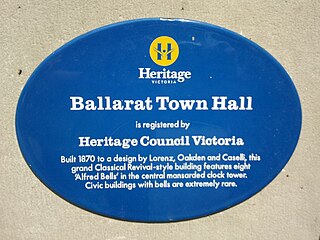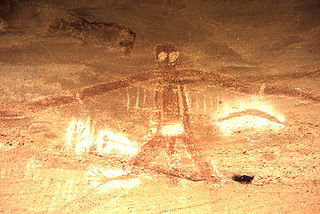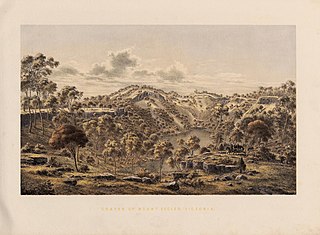Related Research Articles

The Victoria State Government, also referred to as just the Victorian Government, is the state-level authority for Victoria, Australia. Like all state governments, it is formed by three independent branches: the executive, the judicial, and the parliament.

The Victorian Heritage Register (VHR) lists places deemed to be of cultural heritage significance to the State of Victoria, Australia. It has statutory weight under the Heritage Act 2017. The Minister for Planning is the responsible Minister. Heritage Victoria was established as the State Government listing and permit authority in 1995, replacing the original authority, the Historic Buildings Preservation Council, established in 1974. Listing on the Victorian Heritage Register is separate from listing by a local Council or Shire, known as a Heritage Overlay. Heritage Victoria is currently part of the Department of Environment, Land, Water and Planning of the Government of Victoria, Australia. Heritage Victoria reports to the Heritage Council who approve recommendations to the Register and hear appeals when a registration is disputed. The council also hears appeals by an owner to a permit issued by Heritage Victoria. As of 2021, there are over 2,400 places and objects listed on the VHR.
Australian archaeology is a large sub-field in the discipline of archaeology. Archaeology in Australia takes four main forms: Aboriginal archaeology, historical archaeology, maritime archaeology and the archaeology of the contemporary past. Bridging these sub-disciplines is the important concept of cultural heritage management, which encompasses Aboriginal and Torres Strait Islander sites, historical sites, and maritime sites.

Heritage Victoria is a branch of the Victorian Department of Transport and Planning. It is the regulator responsible for administering the Heritage Act 2017. The Heritage Act provides for the protection and conservation of the cultural heritage of Victoria and establishes the Victorian Heritage Register and Heritage Inventory. The Register is a list of places and objects which are of significance to the State of Victoria. The Inventory is a list of known historical archaeological sites. Both statutory lists can be searched via the Victorian Heritage Database.
The Aboriginal Advancement League was founded in 1957 as the Victorian Aborigines Advancement League (VAAL), is the oldest Aboriginal rights organisation in Australia still in operation. Its precursor organisations were the Australian Aborigines League and Save the Aborigines Committee, and it was also formerly known as Aborigines Advancement League (Victoria), and just Aborigines Advancement League.

An Australian Aboriginal sacred site is a place deemed significant and meaningful by Aboriginal Australians based on their beliefs. It may include any feature in the landscape, and in coastal areas, these may lie underwater. The site's status is derived from an association with some aspect of social and cultural tradition, which is related to ancestral beings, collectively known as Dreamtime, who created both physical and social aspects of the world. The site may have its access restricted based on gender, clan or other Aboriginal grouping, or other factors.
Australian heritage laws exist at the national (Commonwealth) level, and at each of Australian Capital Territory, New South Wales, Northern Territory, Queensland, South Australia, Tasmania, Victoria, Western Australia state and territory levels. Generally there are separate laws governing Aboriginal cultural heritage and sacred sites, and historical heritage. State laws also allow heritage to be protected through local government regulations, such as planning schemes, as well.
The Aboriginal Cultural Heritage Act 2003 is legislation passed by Queensland Parliament, commencing in April 2004 to recognise, protect and conserve Aboriginal cultural heritage in the State of Queensland
The Aboriginal Heritage Act 1988 (AHA) is the principal South Australian legislation protecting and preserving the state's Aboriginal heritage. It repealed and replaced the Aboriginal and Historic Relics Preservation Act 1965, which was the first state legislation to protect Aboriginal Australian heritage in Australia.

The Wurundjeri Woi Wurrung Cultural Heritage Aboriginal Corporation, previously the Wurundjeri Tribe Land and Compensation Cultural Heritage Council, is a Registered Aboriginal Party representing the Wurundjeri people, an Aboriginal Australian people of Victoria.
Peter John Frazer Coutts was an Australian archaeologist who was first director of the Victoria Archaeological Survey (VAS), the precursor to the Heritage Branch of Aboriginal Affairs Victoria.
The Victorian state government established the Archaeological and Aboriginal Relics Office under the Chief Secretary's Department, following the enactment of the Archaeological and Aboriginal Relics Preservation Act 1972. One of the original aims of the Relics office was to compile a list of archaeological sites throughout the State, which still continues as the Victorian Aboriginal Heritage Register. Initially staff consisted of the Protector of Relics, the State Archaeologist, two Archaeologists, a Geologist, a Field Assistant and three Administrative staff.

Aboriginal Victorians, the Aboriginal Australians of Victoria, Australia, occupied the land for tens of thousands of years prior to European settlement. Aboriginal people have lived a semi-nomadic existence of fishing, hunting and gathering, and farming eels in Victoria for at least 40,000 years.

Aboriginal sites of Victoria form an important record of human occupation for probably more than 40,000 years. They may be identified from archaeological remains, historical and ethnographic information or continuing oral traditions and encompass places where rituals and ceremonies were performed, occupation sites where people ate, slept and carried out their day to day chores, and ephemeral evidence of people passing through the landscape, such as a discarded axe head or isolated artefact.
The Carisbrook stone arrangement is a well-preserved Aboriginal stone arrangement in Victoria, Australia. It measures 60 by 5 metres and is one of only four stone arrangements in the state and the only one of a boomerang design. It is located about 5 km south-east of the town of Carisbrook, on the banks of Tullaroop Creek.
The Lake Bolac stone arrangement, also known as the Kuyang stone arrangement, is an Aboriginal ceremonial site near the town of Lake Bolac in the Western District, north-east of Hamilton, Victoria, Australia. It is one of several Aboriginal stone arrangements scattered across Australia. It was registered on the Victorian Aboriginal Heritage Register in 1975, and is protected by the Victorian Aboriginal Heritage Act 2006.

A Registered Aboriginal Party (RAP) is a recognised representative body of an Aboriginal Australian people per the Aboriginal Heritage Act 2006 (Vic.), whose function is to protect and manage the Aboriginal cultural heritage in the state of Victoria in Australia.
The Aboriginal Heritage Act 2006 (AHA) of the state of Victoria, Australia was enacted "to provide for the protection of Aboriginal cultural heritage in Victoria". It established Registered Aboriginal Parties to act as the "primary guardians, keepers and knowledge holders of Aboriginal cultural heritage". They protect and manage the Aboriginal cultural heritage in Victoria. The Act also established the Victorian Aboriginal Heritage Council and the Victorian Aboriginal Heritage Register, gave powers for Authorised Officers and Aboriginal Heritage Officers, and laid out Cultural Heritage Management Plans (CHMPs) and Cultural Heritage Permit processes, to manage activities that may impact Aboriginal cultural heritage.
Laila Haglund is an archaeologist who played a key role in establishing consulting archaeology in Australia, and in drafting Queensland's first legislation to protect Aboriginal cultural heritage.

Budj Bim heritage areas includes several protected areas in Victoria, Australia, the largest two being Budj Bim National Heritage Landscape and the Budj Bim Cultural Landscape. Within the latter, there are three Indigenous Protected Areas: the Tyrendarra Indigenous Protected Area, Kurtonitj Indigenous Protected Area, and the Lake Condah Indigenous Protected Area.
References
- ↑ AAV Home - Aboriginal Affairs Victoria - ACHRIS
- ↑ "Aboriginal heritage legislation". Aboriginal Victoria. 18 December 2019. Retrieved 10 March 2020.
- ↑ "Aboriginal Heritage Act 2006 (No. 16 of 2006)". Australasian Legal Information Institute (AustLII).
- ↑ "Authorised Version No. 023, Aboriginal Heritage Act 2006: No. 16 of 2006" (PDF). Retrieved 10 March 2020.
Authorised Version incorporating amendments as at 1 January 2020
- ↑ Office of Aboriginal Affairs Victoria - Department of Premier and Cabinet
- ↑ Coutts, P.J.F. 1975. Victorian Relics Office. 'Australian Archaeology', no.2, 32-33
- ↑ 35,000 reasons to celebrate Aboriginal cultural heritage The Hon Jeanette Powell MP, Minister for Local Government, Minister for Aboriginal Affairs, Press Release, Friday, 05 July 2013